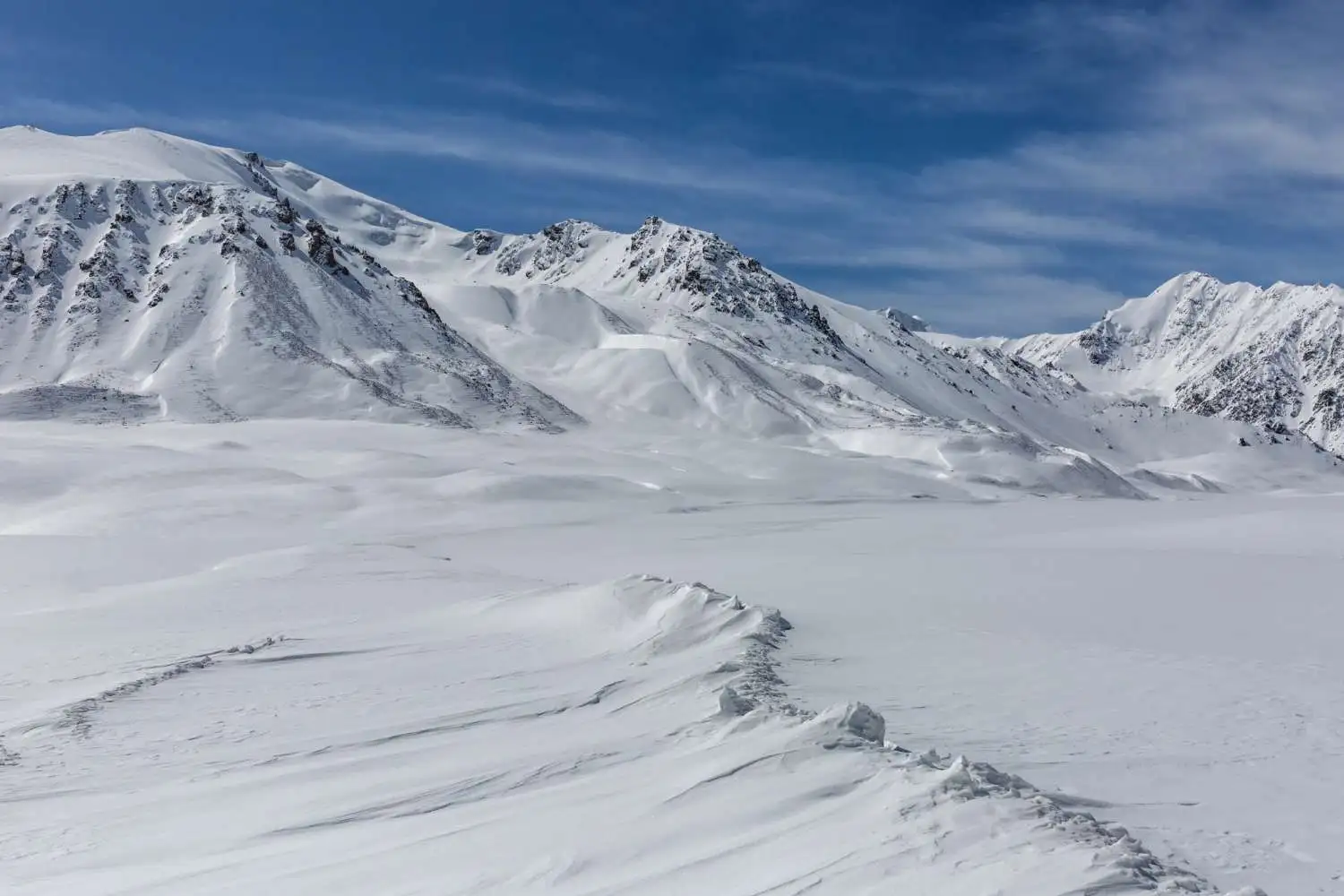⫸ Introduction to the Tundra Biome
Imagine a vast, treeless expanse where the ground remains frozen for much of the year. This is the realm of the tundra biome, a fascinating world defined by extreme temperatures, unique vegetation, and resilient wildlife.
What is a Tundra?
The tundra is a biome characterized by its bitterly cold temperatures, a short growing season, and a layer of permanently frozen subsoil called permafrost. These conditions limit tree growth, giving the tundra its distinctive open landscape.
Key Characteristics of the Tundra Biome
The tundra biome is known for its harsh climate, long, dark winters, and brief, cool summers. Low precipitation and nutrient-poor soil further challenge life. These characteristics shape the specialized adaptations of plants and animals.
The Importance of Tundra Ecosystems
Despite its seemingly barren appearance, the tundra is vital to our planet’s health. Tundra ecosystems store vast amounts of carbon in the frozen permafrost, helping to regulate global temperatures. They also provide critical habitats for unique wildlife like caribou, Arctic foxes, and snowy owls.
⫸ Types of Tundra
The vast and unique tundra biome isn’t a single, uniform environment. Let’s explore the two primary types of tundra–Arctic and Alpine–and the characteristics that distinguish them.
Arctic Tundra
● Location and Climate
The Arctic tundra encircles the North Pole, stretching across vast portions of Alaska, Canada, Russia, Greenland, Iceland, and Scandinavia. This region experiences long, frigid winters with temperatures often plunging below -30°F (-34°C). Short, cool summers offer a brief window for life to flourish.
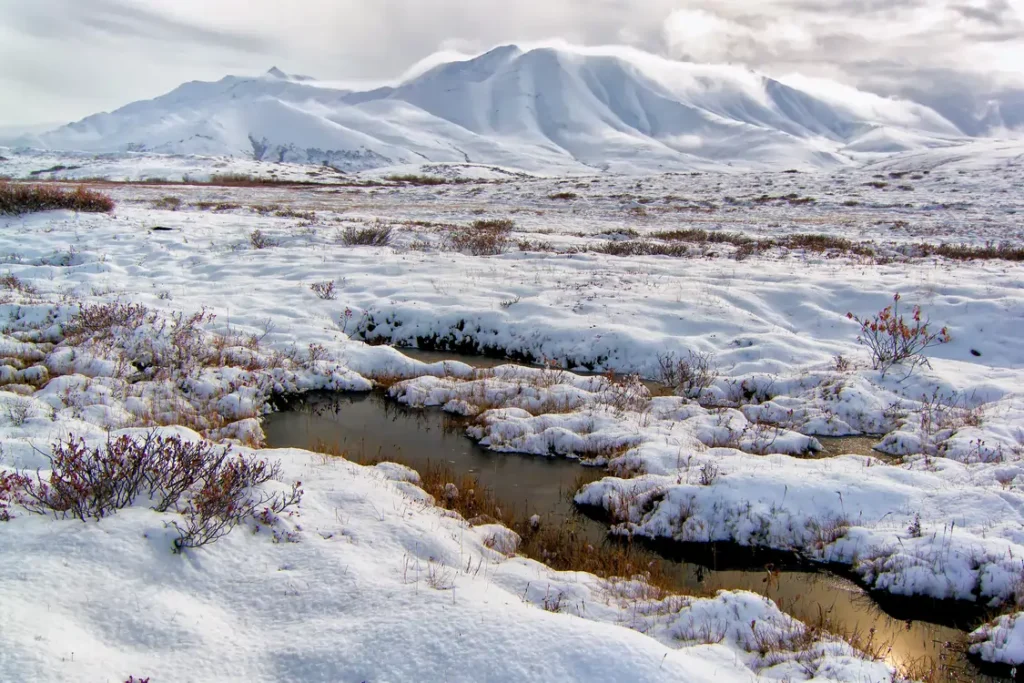
● Distinctive Features
Permafrost, a layer of permanently frozen subsoil, dominates the Arctic tundra and influences its ecology. This frozen layer impedes drainage, leading to shallow pools and wetlands dotting the landscape during warmer months. Vegetation is limited to low-growing plants like mosses, lichens, grasses, and dwarf shrubs.
Alpine Tundra
● Location and High Altitude, Unique Conditions
Alpine tundra exists on high mountaintops worldwide, above the tree line. These environments are characterized by thin air, intense sunlight, and strong winds. Unlike the Arctic tundra, they don’t have permafrost.
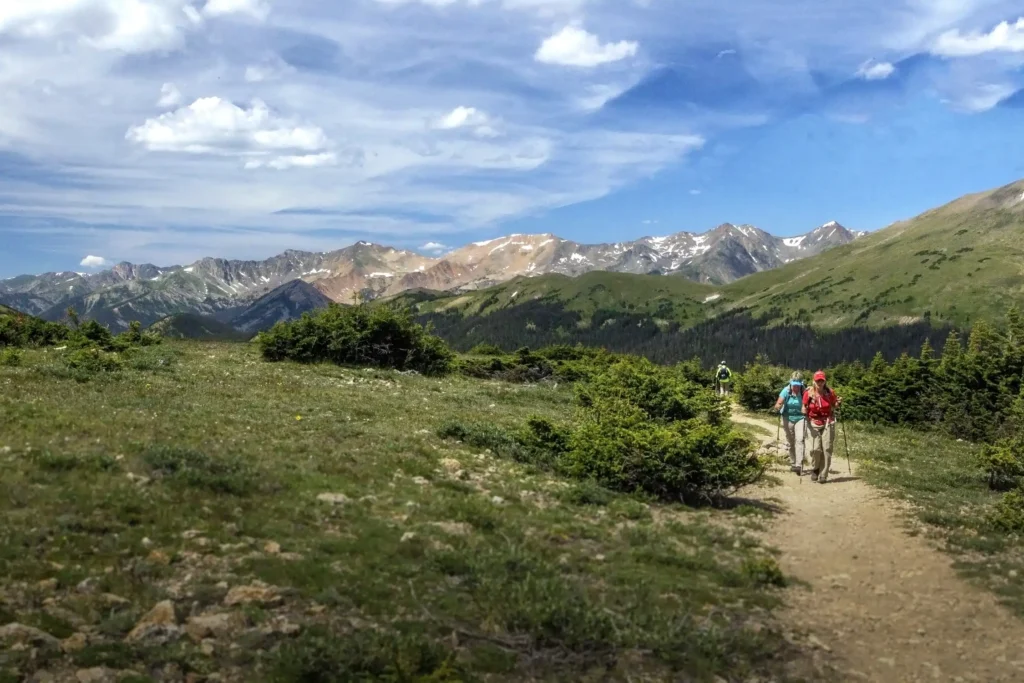
● Distinctive Features
Alpine tundra landscapes feature rocky terrain and well-drained soils. Plant life is similar to the Arctic tundra, with adaptations to withstand the harsh conditions. Wildlife in alpine tundra includes mountain goats, bighorn sheep, and marmots.
Difference between Arctic Tundra & Alpine Tundra
While both share key characteristics of the tundra biome, alpine tundra is distinguished by its lack of permafrost, better soil drainage, and a greater daily temperature fluctuation than the Arctic tundra.
⫸ Life in the Tundra Biome: Adaptations
The tundra biome presents one of the harshest living environments on Earth. Yet, life finds a way to survive and thrive in these challenges. To persist, plants and animals have evolved stunning adaptations under the pressure of the tundra’s unique characteristics.
The Harsh Tundra Climate
Its long, frigid winters and short, cool summers define the tundra. Temperatures frequently plunge below freezing, and high winds sweep the open landscape. Precipitation is scarce, leaving the tundra remarkably dry. These factors combine to create incredibly challenging conditions for life.
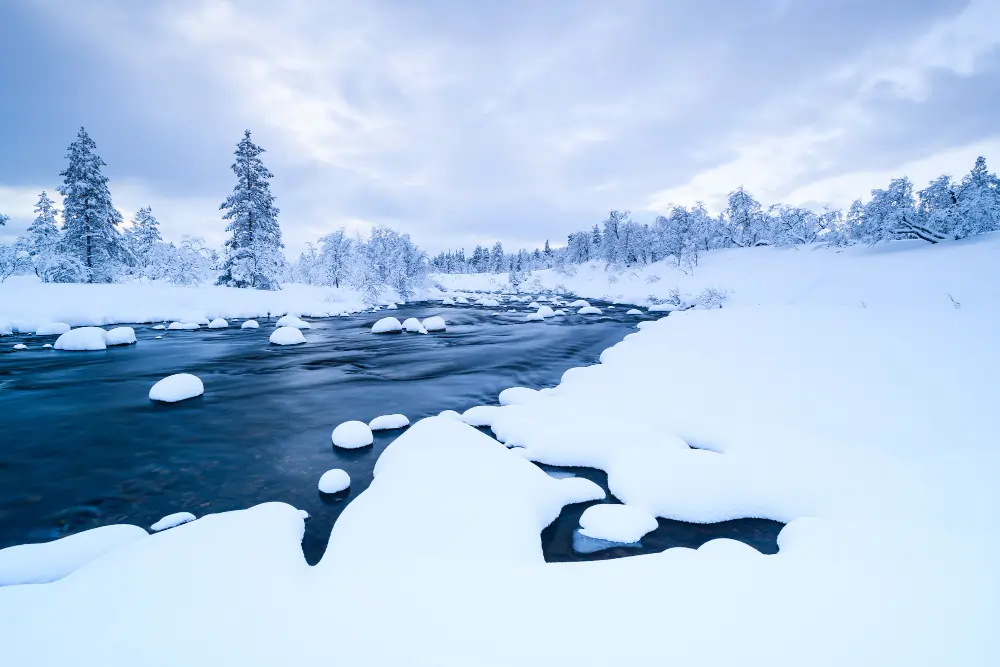
● Temperature Extremes
Tundra regions experience drastic temperature swings between seasons and even throughout the day. Winter temperatures can remain far below freezing for months, while summer brings only a brief window of above-freezing weather.
● Precipitation Patterns
Permafrost: The Frozen Ground
One of the defining characteristics of the tundra biome is permafrost – a layer of ground that remains frozen for at least two consecutive years. This frozen layer presents unique challenges and opportunities for life.
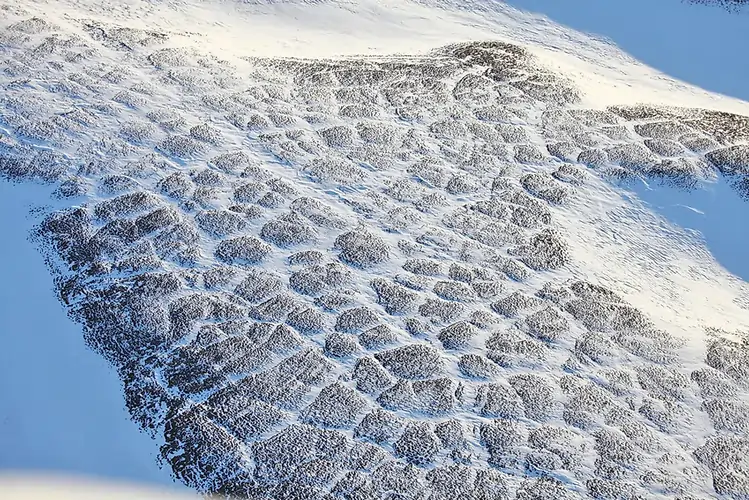
● What is Permafrost?
Permafrost is composed of soil and rock and often includes large amounts of frozen organic matter. The only surface layer, known as the active layer, thaws during the summer, allowing for shallow plant growth.
● Impact of Permafrost on the Tundra Landscape
Permafrost limits drainage, forming ponds, bogs, and wetlands during the warmer months. It also prevents trees from taking root, contributing to the tundra’s characteristic treeless expanse.
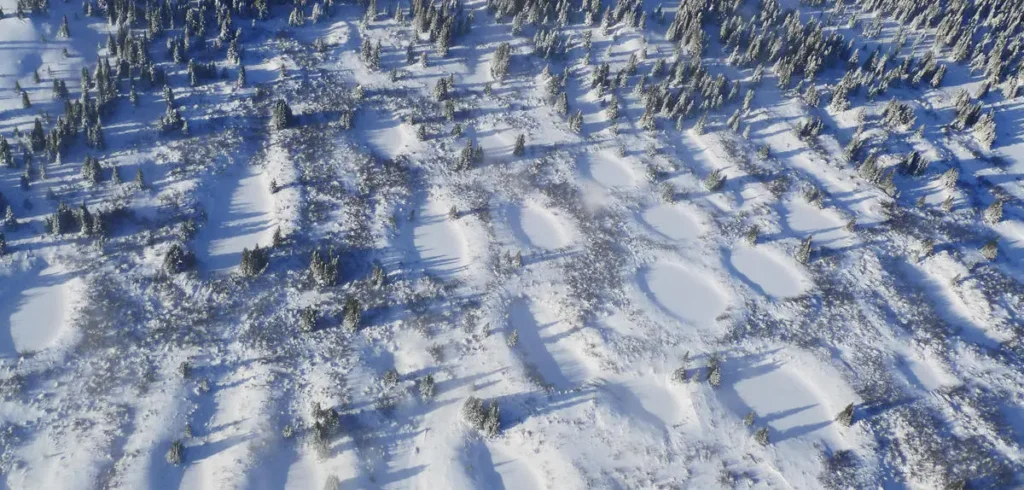
● Permafrost and Climate Change
Rising temperatures threaten the stability of permafrost. As it thaws, it releases stored carbon dioxide and methane – potent greenhouse gases – further exacerbating climate change in a dangerous feedback loop.
⫸ Biodiversity in the Tundra
At first glance, the tundra biome might seem like a barren wasteland. However, a closer look reveals a surprising level of biodiversity, with plants and animals uniquely adapted to the harsh conditions. Let’s explore the survival strategies that make life possible in this seemingly inhospitable environment.
Tundra Plants: Strategies for Survival
● Growth Patterns and Low Stature
Tundra plants remain short and hug the ground, minimizing exposure to the cold, drying winds. They grow in clumps to conserve heat and trap moisture. Their shallow root systems tap into the thin layer of thawed soil during the brief growing season.
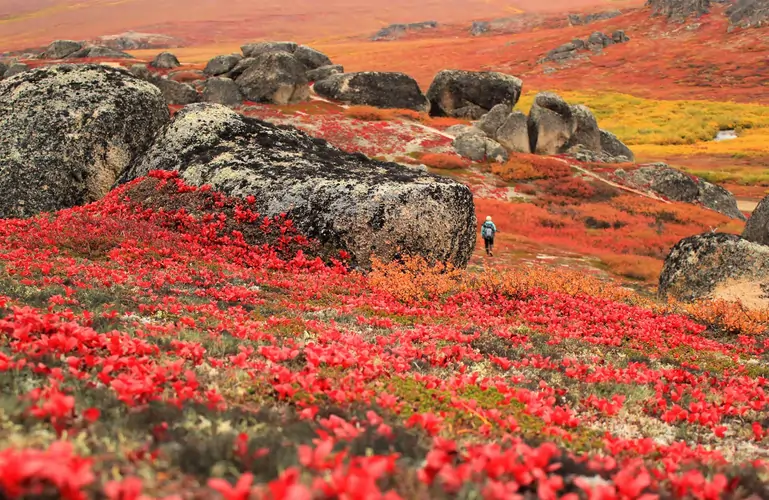
● Evergreen vs. Deciduous Strategies
Some tundra plants are evergreen, retaining their leaves throughout the year. This allows them to start photosynthesizing immediately when conditions improve. Others are deciduous, shedding their leaves to conserve energy during the harsh winter.
● Lichens: Symbiotic Specialists
Tundra Animals: Masters of the Cold
● Hibernation and Migration
Many tundra animals migrate to warmer regions for the winter or hibernate to conserve energy when resources are scarce. Small mammals like ground squirrels may burrow, lowering their body temperature and heart rate for extended periods.
● Insulation: Fur, Feathers, and Fat
Thick fur coats, dense layers of feathers, and substantial fat reserves protect mammals and birds from the bitter cold. Some animals, like the Arctic fox, change their fur or feather color to blend in with the snowy landscape.
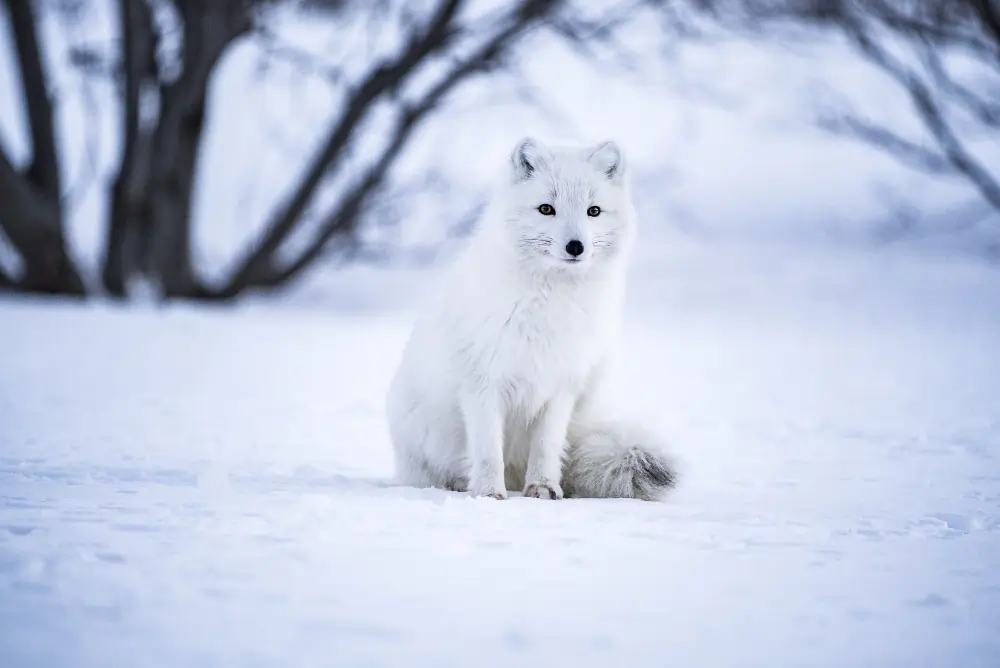
● Camouflage for Protection
Camouflage is vital for both predators and prey in the tundra. Animals like ptarmigans and snowshoe hares change their colors seasonally to match the landscape and evade detection, reflecting the unique characteristics of the tundra biome.
⫸ The Dynamic Tundra Ecosystem: Delicate Balance
The tundra biome may appear stark and desolate, but it houses a surprisingly intricate ecosystem with a delicate balance forged by its extreme conditions. Let’s explore the relationships and processes that sustain life in this seemingly unforgiving environment.
Life in Extreme Conditions
Survival in the tundra requires remarkable adaptations. Plants and animals here have evolved strategies to cope with frigid temperatures, limited nutrients, and a short growing season. These unique characteristics of the tundra biome shape the life that flourishes within.
Food Webs in the Tundra
● Primary Producers & Limited Energy
The base of the tundra food web consists of hardy primary producers like lichens, mosses, grasses, and shrubs. These plants must conserve energy and withstand harsh conditions, leading to slow growth rates and limited food supply throughout the web.
● Keystone Species
Certain species play outsized roles in the tundra ecosystem. For example, lemmings are a critical food source for many predators. Their population fluctuations impact the entire food web, showcasing the importance of keystone species and the delicate interconnectedness of the tundra.
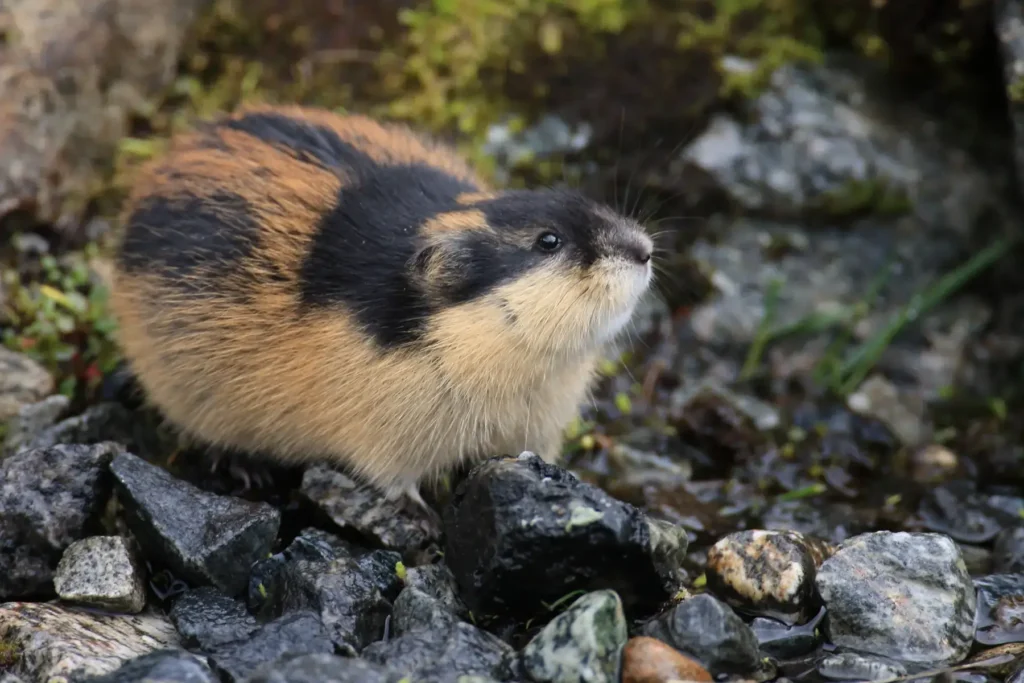
Nutrient Cycling in the Tundra
The cold temperatures and short growing seasons in the tundra biome slow down decomposition rates, leading to limited nutrient availability in the soil, an essential characteristic of the tundra biome. Plants and animals have adapted ways to acquire and retain nutrients, such as specialized root systems or nutrient-rich diets. Nutrient cycling remains a crucial yet delicately balanced process within this ecosystem.
⫸ Human Impact on the Tundra
Once considered remote and untouched, the tundra increasingly feels the effects of human activities. Understanding these impacts is crucial for the preservation of this sensitive biome. Let’s delve into the tundra’s historical footprint and the pressing threats it faces today.
Historical Presence
● Indigenous Peoples and Tundra Adaptations
For thousands of years, indigenous peoples like the Inuit, Sámi, and Nenets have inhabited the tundra regions. They developed a deep knowledge of the environment, utilizing the land’s resources sustainably and developing ingenious adaptations for survival in harsh conditions. Their traditional practices offer valuable insights into the delicate balance within the tundra ecosystem.
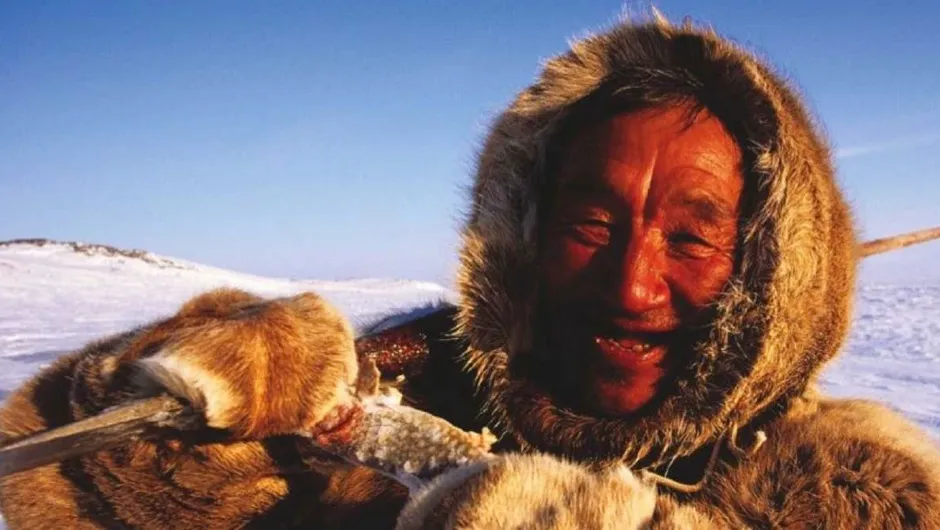
Threats to the Tundra
● Resource Extraction
The discovery of oil, gas, and mineral deposits beneath the tundra has increased resource extraction. This activity brings roads, pipelines, and infrastructure that disrupt habitats and migration patterns. Potential spills and pollution pose significant risks to the fragile tundra environment.
● Climate Change and Habitat Loss
Climate change is profoundly affecting the tundra. Rising temperatures are thawing permafrost, altering landscapes, and raising sea levels. This habitat loss forces tundra species to adapt or face decline. The impacts of climate change on the tundra have far-reaching consequences for the entire planet.
⫸ The Future of the Tundra Biome
The tundra faces an uncertain future. Climate change is warming the Arctic faster than any other region, profoundly affecting the delicate balance of the tundra biome. But there’s hope. Let’s explore conservation initiatives and the critical importance of preserving this unique ecosystem.
Conservation Efforts
● Protecting Fragile Ecosystems
Establishing protected areas where development is restricted is essential to safeguard vital tundra habitats. These areas provide safe havens for wildlife and allow ecosystems to function with minimal human interference. Research and monitoring initiatives help us understand the impacts of climate change on the tundra and guide conservation strategies.
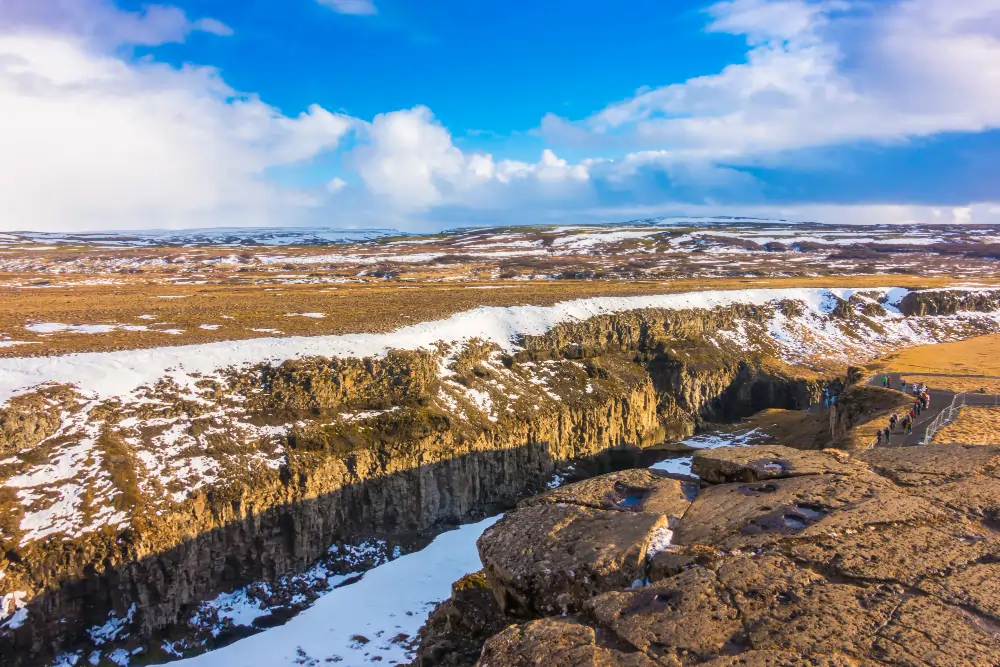
● Sustainable Practices
Promoting sustainable practices is key to minimizing human impact on the tundra. Responsible resource management and strict regulations on industries operating within the biome can help protect its fragile balance. Supporting indigenous communities with traditional knowledge of sustainable living within the tundra is crucial for long-term conservation.
Importance of Tundra Preservation
Preserving the tundra biome has far-reaching benefits:
- Climate Regulation: The vast amounts of carbon stored in permafrost are crucial in combating global warming.
- Biodiversity: The tundra supports unique species; its loss impacts the global web of life.
- Cultural Heritage: Tundra ecosystems hold deep significance for indigenous communities.
⫸ Conclusion
The tundra biome, a world of stark beauty and quiet resilience, teaches us vital lessons about adaptation and environmental balance. The unique characteristics of the tundra biome shape a fragile ecosystem crucial to our planet’s health. Understanding the characteristics of the tundra biome underscores the importance of conservation and responsible stewardship as we face a changing climate.

